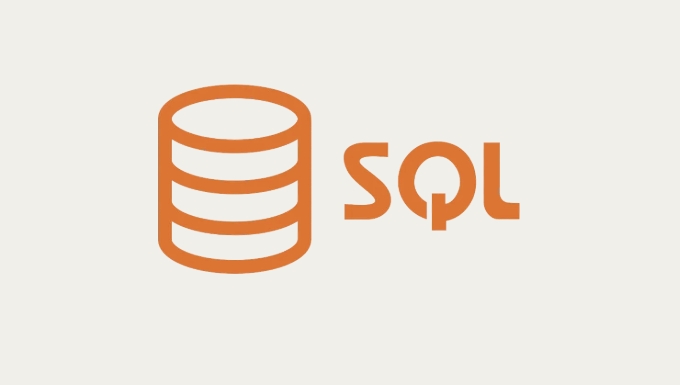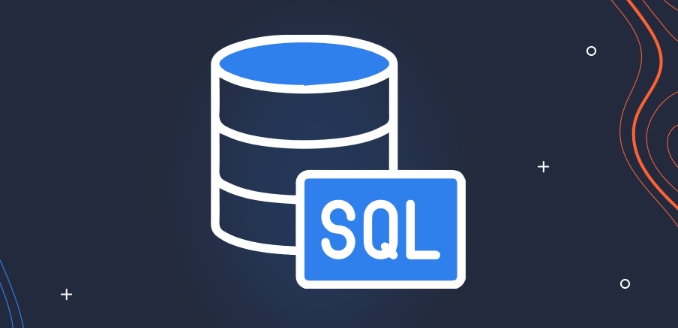Row-level security (RLS) is a database access control mechanism that dynamically restricts users' access to specific data rows through policies. It is often used in multi-tenant systems and permission isolation scenarios. Unlike view or column permissions, RLS automatically adds a WHERE condition when the query runs, preventing users from seeing rows of data that do not belong to them. The steps to implement RLS in SQL Server include: 1. Create an inline table value function to return access conditions; 2. Create a security policy and bind the function to the target table; 3. Determine access permissions based on the user's identity. For example, in the Sales table, salespeople can only view their own data. Notes include: the function must be inline form, the performance needs to be optimized in combination with indexes, and the debugging can be simulated by EXECUTE AS, and it is suitable for user information in database management scenarios. In addition, PostgreSQL and Azure SQL also support RLS, but have slight syntax differences; while MySQL or Oracle needs to be implemented with the help of view and application logic simulation. Overall, RLS improves security and reduces the workload of business-level processing permissions.

To put it directly, the key is to achieve row-level security in SQL, the key is to control which rows of data users can see through policies, rather than the entire table or column. This function is particularly suitable for multi-tenant systems, permission isolation and other scenarios.

What is Row-Level Security (RLS)
RLS is a database-level access control mechanism that allows you to dynamically restrict access to certain rows in a table based on the current user identity or execution context. For example, people in the sales department can only see data in their own area and cannot see records in other areas.
It does not just encapsulate the query like a view, nor does it restrict field access like column permissions. Instead, it automatically adds the WHERE condition when the query runs , and users cannot see data that does not belong to them.

How to implement RLS in SQL Server
SQL Server has supported RLS since 2016. Here are the basic steps to implement it:
- Create an Inline Table-Valued Function that returns the data conditions allowed to be accessed
- Create a Security Policy and bind the function to the target table
- Determine whether to allow access to the corresponding row based on logged-in user information (such as SUSER_SNAME or custom context)
For example: Suppose there is a Sales table, and each salesperson can only view his own data.

-- Step 1: Create filter function CREATE FUNCTION dbo.fn_SalesAccessPredicate(@SalesPersonId INT) RETURNS TABLE WITH SCHEMABINDING AS RETURN SELECT 1 AS fn_accessResult WHERE @SalesPersonId = USER_ID() OR IS_MEMBER('db_owner') = 1;
-- Step 2: Create a security policy CREATE SECURITY POLICY SalesAccessPolicy ADD FILTER PREDICATE dbo.fn_SalesAccessPredicate(SalesPersonId) ON dbo.Sales WITH (STATE = ON);
After setting this way, ordinary users can only see the sales records corresponding to their ID.
Notes and FAQs
- The function must be inline : not an ordinary scalar function or multi-statement function, otherwise the binding will fail.
- The performance impact is not great but requires testing : RLS filtering is added during the query optimization stage and will not significantly slow down the query speed, but it is recommended to cooperate with the index under large data volume.
- Debugging is a bit troublesome : by default you cannot see the filtered data, you can use
EXECUTE ASto simulate different users to test the effect. - Applicable to specific user models : If user information is not managed in the database, it may be necessary to pass in context in conjunction with the application layer, such as using
SESSION_CONTEXTto store user information.
Support for other databases
In addition to SQL Server, PostgreSQL and Azure SQL also support RLS, but the syntax is slightly different:
- PostgreSQL Using
CREATE POLICYUSINGExpressions - Azure SQL is basically consistent with SQL Server
If you are using MySQL or Oracle, this type of function must be implemented through view application logic simulation, and it does not natively support true row-level security.
In general, RLS is a very practical function that can help you save a lot of trouble in the business layer of permission filtering. Although there is a little threshold for configuration, once it is installed, the subsequent maintenance cost is low and the safety is high. Basically that's it.
The above is the detailed content of SQL Row-Level Security Implementation. For more information, please follow other related articles on the PHP Chinese website!

Hot AI Tools

Undress AI Tool
Undress images for free

Undresser.AI Undress
AI-powered app for creating realistic nude photos

AI Clothes Remover
Online AI tool for removing clothes from photos.

Clothoff.io
AI clothes remover

Video Face Swap
Swap faces in any video effortlessly with our completely free AI face swap tool!

Hot Article

Hot Tools

Notepad++7.3.1
Easy-to-use and free code editor

SublimeText3 Chinese version
Chinese version, very easy to use

Zend Studio 13.0.1
Powerful PHP integrated development environment

Dreamweaver CS6
Visual web development tools

SublimeText3 Mac version
God-level code editing software (SublimeText3)
 How to find columns with a specific name in a SQL database?
Jul 07, 2025 am 02:08 AM
How to find columns with a specific name in a SQL database?
Jul 07, 2025 am 02:08 AM
To find columns with specific names in SQL databases, it can be achieved through system information schema or the database comes with its own metadata table. 1. Use INFORMATION_SCHEMA.COLUMNS query is suitable for most SQL databases, such as MySQL, PostgreSQL and SQLServer, and matches through SELECTTABLE_NAME, COLUMN_NAME and combined with WHERECOLUMN_NAMELIKE or =; 2. Specific databases can query system tables or views, such as SQLServer uses sys.columns to combine sys.tables for JOIN query, PostgreSQL can be used through inf
 How to backup and restore a SQL database
Jul 06, 2025 am 01:04 AM
How to backup and restore a SQL database
Jul 06, 2025 am 01:04 AM
Backing up and restoring SQL databases is a key operation to prevent data loss and system failure. 1. Use SSMS to visually back up the database, select complete and differential backup types and set a secure path; 2. Use T-SQL commands to achieve flexible backups, supporting automation and remote execution; 3. Recovering the database can be completed through SSMS or RESTOREDATABASE commands, and use WITHREPLACE and SINGLE_USER modes if necessary; 4. Pay attention to permission configuration, path access, avoid overwriting the production environment and verifying backup integrity. Mastering these methods can effectively ensure data security and business continuity.
 When to use SQL subqueries versus joins for data retrieval.
Jul 14, 2025 am 02:29 AM
When to use SQL subqueries versus joins for data retrieval.
Jul 14, 2025 am 02:29 AM
Whether to use subqueries or connections depends on the specific scenario. 1. When it is necessary to filter data in advance, subqueries are more effective, such as finding today's order customers; 2. When merging large-scale data sets, the connection efficiency is higher, such as obtaining customers and their recent orders; 3. When writing highly readable logic, the subqueries structure is clearer, such as finding hot-selling products; 4. When performing updates or deleting operations that depend on related data, subqueries are the preferred solution, such as deleting users that have not been logged in for a long time.
 Comparing Different SQL Dialects (e.g., MySQL, PostgreSQL, SQL Server)
Jul 07, 2025 am 02:02 AM
Comparing Different SQL Dialects (e.g., MySQL, PostgreSQL, SQL Server)
Jul 07, 2025 am 02:02 AM
SQLdialectsdifferinsyntaxandfunctionality.1.StringconcatenationusesCONCAT()inMySQL,||orCONCAT()inPostgreSQL,and inSQLServer.2.NULLhandlingemploysIFNULL()inMySQL,ISNULL()inSQLServer,andCOALESCE()commonacrossall.3.Datefunctionsvary:NOW(),DATE_FORMAT()i
 What is the difference between SQL and NoSQL
Jul 08, 2025 am 01:52 AM
What is the difference between SQL and NoSQL
Jul 08, 2025 am 01:52 AM
The core difference between SQL and NoSQL databases is data structure, scaling method and consistency model. 1. In terms of data structure, SQL uses predefined patterns to store structured data, while NoSQL supports flexible formats such as documents, key values, column families and graphs to process unstructured data; 2. In terms of scalability, SQL usually relies on stronger hardware on vertical expansion, while NoSQL realizes distributed expansion through horizontal expansion; 3. In terms of consistency, SQL follows ACID to ensure strong consistency and is suitable for financial systems, while NoSQL mostly uses BASE models to emphasize availability and final consistency; 4. In terms of query language, SQL provides standardized and powerful query capabilities, while NoSQL query languages ??are diverse but not as mature and unified as SQL.
 Advantages of Using Common Table Expressions (CTEs) in SQL.
Jul 07, 2025 am 01:46 AM
Advantages of Using Common Table Expressions (CTEs) in SQL.
Jul 07, 2025 am 01:46 AM
The main advantages of CTEs in SQL queries include improving readability, supporting recursive queries, avoiding duplicate subqueries, and enhancing modular and debugging capabilities. 1. Improve readability: By splitting complex queries into multiple independent logical blocks, the structure is clearer; 2. Support recursive queries: The logic is simpler when processing hierarchical data, suitable for deep traversal; 3. Avoid duplicate subqueries: define multiple references at a time, reduce redundancy and improve efficiency; 4. Better modularization and debugging capabilities: Each CTE block can be run and verified separately, making it easier to troubleshoot problems.
 What is a composite primary key in SQL?
Jul 08, 2025 am 01:38 AM
What is a composite primary key in SQL?
Jul 08, 2025 am 01:38 AM
AcompositeprimarykeyinSQLisaprimarykeycomposedoftwoormorecolumnsthattogetheruniquelyidentifyeachrow.1.Itisusedwhennosinglecolumncanensurerowuniqueness,suchasinastudent-courseenrollmenttablewherebothStudentIDandCourseIDarerequiredtoformauniquecombinat
 How to find the second highest salary in SQL
Jul 14, 2025 am 02:06 AM
How to find the second highest salary in SQL
Jul 14, 2025 am 02:06 AM
There are three core methods to find the second highest salary: 1. Use LIMIT and OFFSET to skip the maximum salary and get the maximum, which is suitable for small systems; 2. Exclude the maximum value through subqueries and then find MAX, which is highly compatible and suitable for complex queries; 3. Use DENSE_RANK or ROW_NUMBER window function to process parallel rankings, which is highly scalable. In addition, it is necessary to combine IFNULL or COALESCE to deal with the absence of a second-highest salary.






